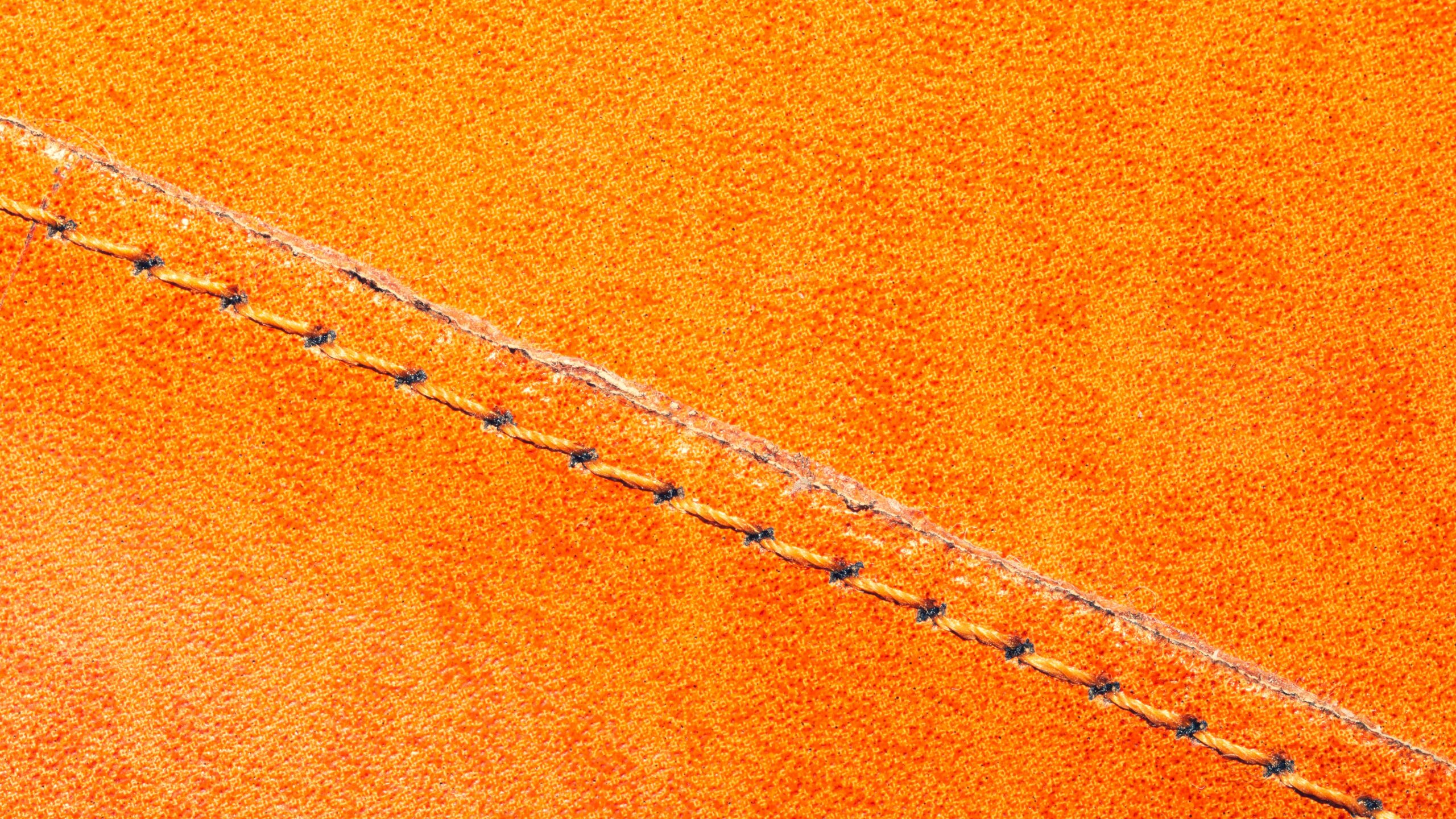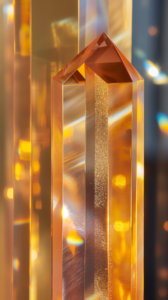12/07/2024
The fashion industry is experiencing a shift towards sustainable solutions and circularity. A major factor in this drive is the advancement of sustainable materials. In the third blog of our ‘Sustainable Style’ series we explore leather alternatives and delve into their production processes. Leather is particularly interesting to look at due to its traditional association with luxury and durability, making its sustainable alternatives a critical focus for eco-conscious consumers.
Leather alternatives
Leather and animal hide have been used by humans for thousands of years for clothing, shelter and tools. As a modern fashion staple, leather is still coveted for its durability and its status as a symbol of quality, with the global leather goods market set to reach USD 405.28 billion by 2030.
However, as an animal-derived product, rising ethical and environmental concerns are prompting consumers to increasingly seek leather alternatives, with up to 20% of UK consumers choosing to no longer buy or use leather items according to a survey by LeatherUK.
Notwithstanding the ethical concerns of using animal-derived products, the leather manufacturing process not only has the environmental impact associated with the often chemical-intensive treatment process (leather tanning) but also that of animal farming. Critics argue that animal farming is already required for the meat and dairy industry, therefore animal hide is merely a by-product that should not be wasted. However, the CO2 equivalent (CO2e) emitted from leather tanning alone exceeds the CO2e emissions of sending untreated hides to landfill to decompose.
With the vegan leather/leather alternative market set to reach USD 131.7 billion by 2030 and the LeatherUK survey revealing that over half of the respondents had no idea what “vegan leather” is made of, let’s have a look at some leather alternatives.
Synthetic leather
Synthetic leather made from polyurethane (PU) or PVC, also commonly known as “imitation leather” or “vegan leather”, is already widely used and is currently the most popular leather alternative. When looking at the properties of synthetic leather, it successfully mimics the appearance, flexibility, and water resistance of traditional leather. However, it falls short in terms of breathability and long-term durability, in addition to facing overall sustainability challenges. While synthetic leather manufacturing has a lower water and energy consumption when compared to raising animals and leather tanning for traditional leather, it commonly still depends on fossil fuel extraction to produce the material, can leak micro-plastics into the environment, and cannot always be recycled.
Nevertheless, recycled synthetic leather is becoming increasingly popular, as is the integration of bio-based plastics (i.e. polymers derived from natural sources). Process improvements to the manufacturing and incorporation of PU into innovative synthetic leather have been shown to reduce greenhouse gas emissions by up to 52% compared to conventional synthetic leather.
While these steps go some way to reduce the environmental impact of manufacturing synthetic leather, synthetic leather’s inherent nature as a plastic-based product mean that it is unlikely to ever truly be a sustainable leather alternative.
Mushroom leather
Mushroom-based leathers have had their share of the spotlight, having been showcased at Paris Fashion Week and at the V&A with uptake from brands including Stella McCartney and Adidas.
Mushroom leathers can be made from mycelium (the mushroom root network structure) or from the fungus spores themselves.
Mycelium leather has garnered interest from global brands, including the luxury design house Hermès. Hermes Sellier, a subsidiary of Hermès, has innovated and patented a method for producing a finished leather substitute using mycelium (European patent EP 4 212 589 B1). Not only has there been innovation in the making of mycelium leather, but there has also been advancements in the growth of mycelium to further improve the sustainability of mycelium leather. For example, advancements in vertical farming have allowed mycelium to be harvested in innovative vertical farms with controlled growing conditions while minimising land usage and using up to 100% renewable energy to power. The innovations being made in the mycelium leather space clearly highlights the demand for mycelium leather and thus also a demand for further innovation to make mycelium leather even more competitive and even more sustainable.
Interestingly, fungus spore leather can inherently contain endemic penicillin, making it naturally antibacterial. This may be particularly desirable for certain garments, such as sportswear. The utilisation of naturally occurring properties of mushrooms and other sources for alternative leather is an interesting area for further development of alternative leathers.
Fruit-based leather
More recently, plant-based leather alternatives have also been drawing attention from major fashion retailers and designers. In particular, by-products and waste from the food and drink industry are being used as leather alternatives for their fibrous qualities and bio-oils. As well as their ability to replace otherwise plastic-based materials, the benefits of plant-based leather also include supporting farming communities and saving materials from going to waste, especially as about 45% of fruit and vegetables are already wasted each year globally.
There has been a lot of innovation in the plant-based leather alternatives industry to develop leather alternatives from various sources, including pineapple leaves, banana peels, unsold mangoes, coconut waste, and grape and apple skins and seeds. Ananas Anam, a company producing leather alternatives from pineapple leaves, has even seen its products showcased on the red carpet at the Met Gala. Ananas Anam also holds a patent (European patent EP 2 576 881 B1) covering a leather alternative comprising pineapple.
However, to produce plant-based leather, the fruit materials often need to be blended with synthetic materials to provide strength and durability. In particular, PU is commonly incorporated as a coating to preserve the fruit material and increase its life. As a result, these materials cannot always be fully biodegradable in regular composting conditions as a result of the synthetic elements present in the material composition.
Fruit-based leathers thus are a move in the right direction, as the foundation of natural fibres in these materials give the potential for them to be a fully circular material, with no waste from source to disposal as the natural fibres can be composted. However, there is still a need to remove the reliance on virgin fossil fuel derived plastics in these leather alternatives. Nonetheless, the increased prevalence of recycled and bio-based polymers which are being incorporated into these leather alternatives in place of virgin fossil fuels is showing good promise for fruit-based leathers.
Tree-based leather
Few leather alternatives are currently plastic-free altogether but of the select few, trees appear to be a common source of raw materials. Cork leather made from the bark of cork oak trees and backed with an organic material (e.g. cotton) is fully biodegradable and benefits from the intrinsic strength and durability of cork. The cork can be harvested by removing the bark by hand without chopping down the cork trees with the added benefit that cork trees can act as a carbon sink for hundreds of years. For example, patent application IN202321013010 relates to a cork fibre material which can be blended with materials such as banana fibres or coffee husks for a biodegradable leather alternative.
Other plastic-free leather alternatives include the use of natural rubber, forestry waste and natural pigments. Natural rubber is intrinsically a water-proof elastomer with high resilience, giving it the ability to mimic some of the characteristics of traditional leather. Leather alternatives made from plant, agricultural and forestry waste (such as that described in UK patent GB 2604624 B) have also been shown to use as little as 0.1% of the water demand for the equivalent traditional leather production. Indeed, leather formed from tree-based materials perhaps show the most promise currently, with a greater proportion of such leather alternatives not needing to depend on synthetic polymers such as PU.
Importance of IP
Evidently, the growing leather alternative market is a space for innovation across many facets. New material compositions, manufacturing, recycling and material recovery processes are only some of the innovations that could be eligible for intellectual property protection. At Reddie & Grose LLP, we have a lot of experience in the intellectual property protection of sustainable materials and would be happy to offer advice on the protection of inventions in this field.
Read the next article of Sustainable Style: Brands in sustainable fashion
Read the previous article of Sustainable Style: Designing a sustainable future for the fashion industry.
This article is for general information only. Its content is not a statement of the law on any subject and does not constitute advice. Please contact Reddie & Grose LLP for advice before taking any action in reliance on it.



